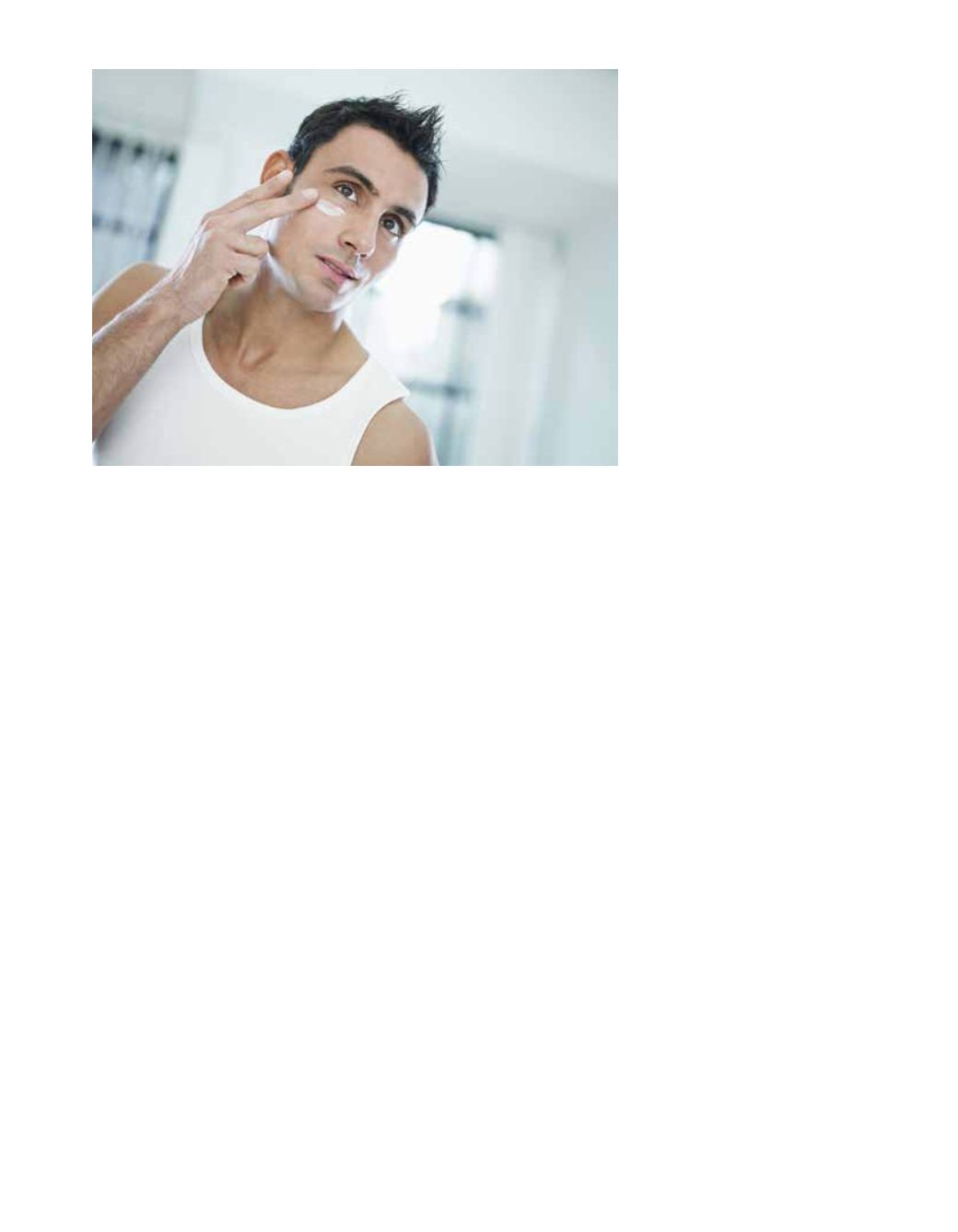
Brazilian waxing? Well now there’s
‘Boyzilian’ waxing, and it’s exactly
what you think it is. In fact, a survey
by Skin Health Alliance revealed
that 31.7 per cent of men admitted
to removing hair from their “other”
regions.
Male skin care products have
skyrocketed in popularity. Forty-
three per cent of American men
admit to using skin care items other
than shaving products. And when
it comes to dressing for success,
gone are the frumpy, oversized suits
and single cut jeans of yesteryear,
replaced by form-hugging slim fit
jackets and skinny jeans.
Tattoos, once considered a social
stigma and label for delinquents,
criminals and deviants, are now a
cultural norm. A 2013 Pew Research
study found that 36 per cent of
Americans aged 18-25 and 40 per
cent aged 26-40 have at least one
tattoo. Almost every young athlete
I see on television or in my gym is
“inked” or “tatted up”.
But the ultimate example of the
changing attitudes to male vanity
is the scalpel. In 2014, according to
Dr Michael Edwards, President of
the American Society for Aesthetic
Plastic Surgery (ASAPS), the number
of men undergoing both surgical and
nonsurgical procedures went up 43
per cent. Since 1997, when ASAPS
first began tracking statistical data,
there has been a 273 per cent rise in
the number of procedures performed
on men. Likewise, statistics from the
American Society of Plastic Surgeons
(ASPS) show a steady rise in male
cosmetic procedures from the year
2000 to 2014. The most popular
procedures include: Botox (or Brotox)
injections, rhinoplasty (nose job),
liposuction, blepharoplasty (eyelid
surgery) and gynecomastia surgery
(male breast reduction).
Feeling good
According to Billy Crystal’s hilarious
portrayal of Fernando Lamas on
Saturday Night Live
, “It is better to
look good than to feel good, my
daawlings”. Obviously this is not
quite accurate and feeling good is
often related to looking good, and
vice versa. Traditionally, pleasure for
men has involved the Big Three: Sex,
Alcohol and Drugs (SAD). As men
are becoming more health conscious,
new players are emerging in the male
“feel good” market.
Alternative therapies including
yoga, meditation and tai chi are
becoming increasingly popular with
guys. In the past, these activities
were ridiculed and shunned,
regarded by most men as being too
“girly” or “new agey”. Currently,
many top athletes and celebrities
are bucking the trend and using
these techniques in their training
regimens. Basketball stars LeBron
James and Kevin Durant regularly
practise yoga as a way to increase
their flexibility and endurance. Kobe
Bryant uses meditation before games
to improve focus and reduce anxiety.
Keanu Reeves brings a masculine
edge to a graceful martial art in his
movie
Man of Tai Chi
.
But the biggest game changer in
the world of manly feelings came
in 1998 with the introduction of
the little blue pill. Viagra was the
epicentre of a social tsunami unseen
since the advent of the birth control
pill. Countless relationships and
marriages were saved and many
were ended. All of a sudden, age was
no longer a limiting factor to ahem
“performance”. Overnight, men in
the 55-plus age group were back in
the game. With a seemingly new
lease on life, it was time to care about
personal appearance again.
But does looking and feeling good
mean you’re in good health? Not
necessarily.
Men’s health
The term ‘men’s health’ used to be an
oxymoron. Today, there are countless
magazines and websites dedicated
to the topic, and while studies do
show that men are making more of
an effort to be proactive about their
health, we still trail women by a huge
margin. Men and doctors are like
oil and water. A recent Centers for
Disease Control (CDC) survey found
that males were 80 per cent less likely
to use regular medical services when
compared to females.
It is a comical fact that men only
visit doctors when they are gravely
ill or in a medical crisis. I see this in
my own practice. The majority of my
proactive patient base is female. My
June 2015
43


